Pivot points serve as a cornerstone in technical analysis, offering traders a roadmap to navigate the complexities of the market. From identifying critical support and resistance levels to pinpointing potential trend reversals, these dynamic indicators play a pivotal role in shaping trading strategies.
However, the true power of pivot points lies in their versatility and adaptability across various trading styles and timeframes. As we explore the 10 best applications of pivot points in technical analysis, we unveil a world of possibilities that can revolutionize how traders approach the markets.
Identifying Key Support and Resistance Levels
In technical analysis, the identification of key support and resistance levels through the utilization of pivot points is essential for formulating informed trading strategies. Pivot points help traders gauge potential support and resistance levels by analyzing the previous day's price action. Support levels are calculated below the pivot point, indicating a price level where an asset may find buying interest.
On the other hand, resistance levels are calculated above the pivot point, signifying a price level where selling pressure could potentially halt an asset's upward movement. These levels play a crucial role in influencing market sentiment and guiding trading decisions.
Determining Trend Reversals
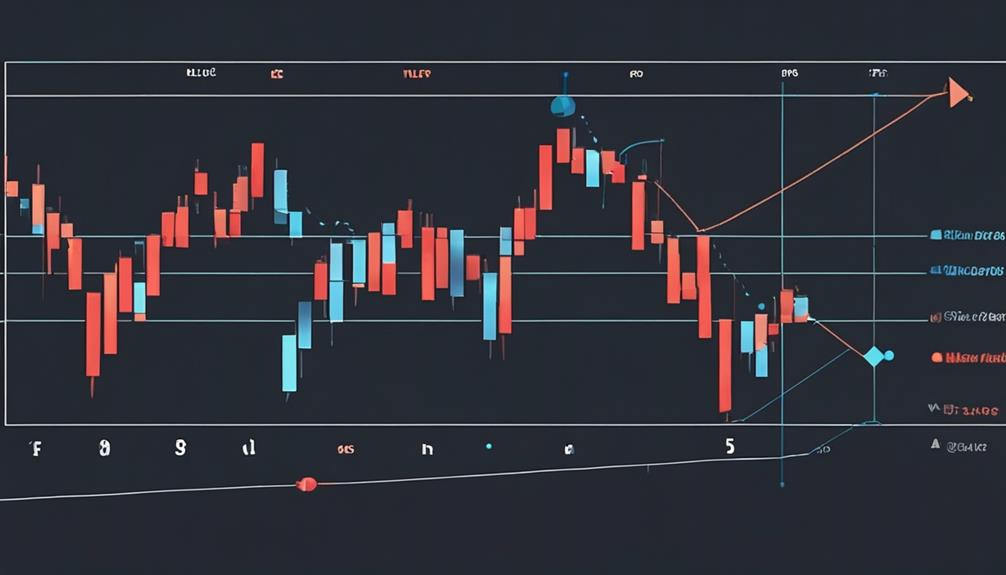
Signalizing shifts in market sentiment, pivot points play a crucial role in determining trend reversals in technical analysis. When a price moves above the pivot point, it suggests a potential bullish trend reversal, indicating a shift towards buying pressure.
Conversely, a movement below the pivot point signifies a possible bearish trend reversal, signaling increasing selling pressure. Traders rely on pivot points as key levels to gauge the strength of these trend changes and adjust their trading strategies accordingly.
By using pivot points in conjunction with other technical indicators, traders can further refine their analysis and improve the accuracy of predicting trend reversals. This strategic approach allows traders to anticipate market movements effectively, enhancing decision-making processes and overall trading performance.
In essence, pivot points serve as valuable tools for traders seeking to navigate trend changes and capitalize on opportunities in the dynamic financial markets.
Setting Profit Targets
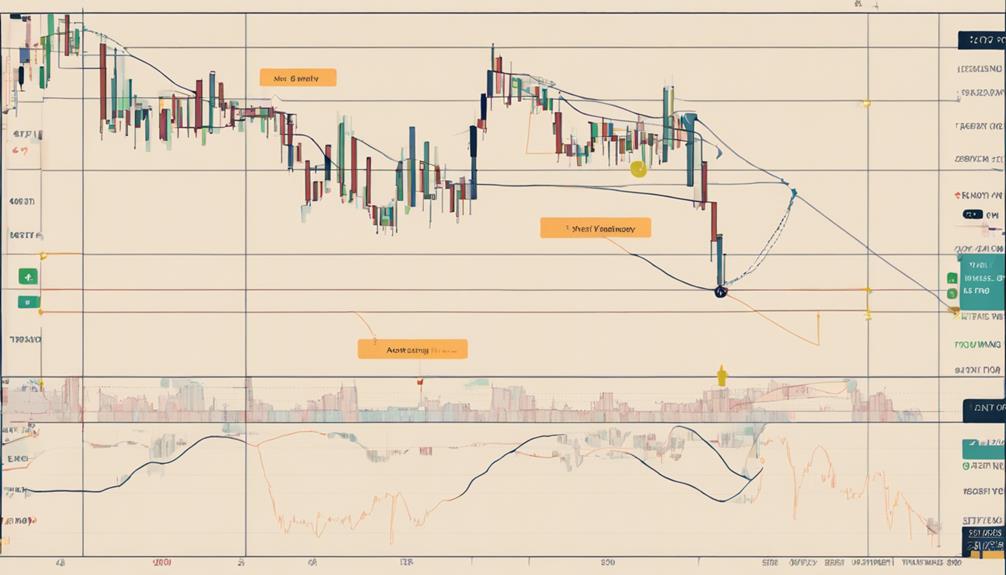
Setting profit targets based on pivot points involves strategically identifying levels of potential resistance derived from the pivot calculations. Traders can utilize pivot point levels such as R1, R2, and R3 to pinpoint optimal profit-taking opportunities during upward price movements.
Profit Target Strategies
Utilizing pivot points in technical analysis enables traders to strategically establish profit targets by identifying key resistance levels derived from the pivot point calculation.
Traders can use pivot point resistance levels such as R1, R2, and R3 as profit target areas within their trading strategy. By aiming to take profits at these predetermined levels, traders can capitalize on potential price reversals.
This approach also helps in setting clear exit points to lock in gains effectively. Incorporating profit target strategies with pivot points enhances risk management and aids in making well-informed decisions in various trading scenarios.
Timing Exit Points
Incorporating pivot points into the decision-making process enables traders to strategically time their exit points by pinpointing key levels indicating potential price reversals. When setting profit targets using pivot points, traders focus on resistance levels projected by the indicator. By analyzing these levels, traders can establish specific price levels to lock in profits based on the calculated support and resistance points.
This structured approach provided by pivot points aids traders in determining optimal exit points to secure gains. Utilizing pivot points allows traders to plan their profit-taking levels effectively, aligning with projected support and resistance zones. Overall, pivot points offer traders a data-driven method to enhance their decision-making process when it comes to timing exit points and maximizing profits.
Confirming Entry and Exit Points
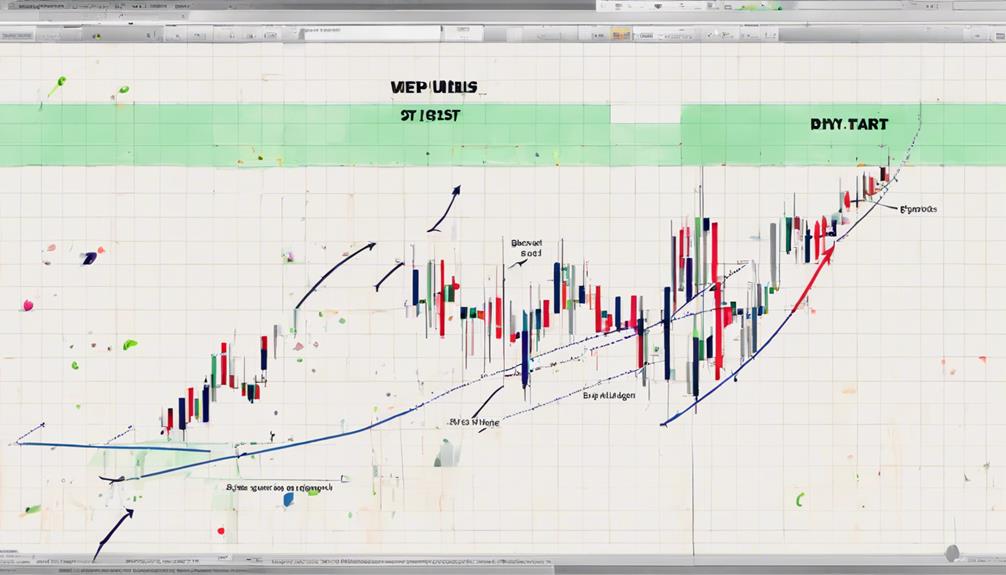
Pivot points serve as crucial tools in confirming entry and exit points for traders.
By observing price movements in relation to pivot levels, traders can validate entry points for potential bullish momentum.
Similarly, identifying resistance levels above pivot points can help confirm exit signals, signaling a possible price reversal and aiding in risk management strategies.
Entry Point Validation
Validating entry points in trading involves confirming the likelihood of price support and resistance levels using pivot points. When utilizing pivot points for entry point validation, traders consider the following:
- Analyzing market price levels to identify potential entry and exit points.
- Assessing the strength of a trend before deciding to enter a trade.
- Confirming support and resistance levels to set effective stop-loss orders.
- Enhancing risk management strategies by incorporating pivot points in technical analysis.
Exit Signal Confirmation
Exit signal confirmation in trading involves utilizing pivot points to identify key support and resistance levels for validating optimal entry and exit points. By pinpointing these key levels, traders can make informed decisions regarding their trade exits, enhancing the accuracy of their strategies.
Incorporating pivot points with other technical indicators can further strengthen the confirmation of exit signals, providing a comprehensive analysis for traders. Analyzing pivot point levels not only assists in confirming exit signals but also aids in determining the most favorable timing for exiting trades.
This strategic approach to exit signal confirmation ensures that traders have a solid foundation for their trade validation process, leading to more effective and profitable trading outcomes.
Enhancing Risk Management
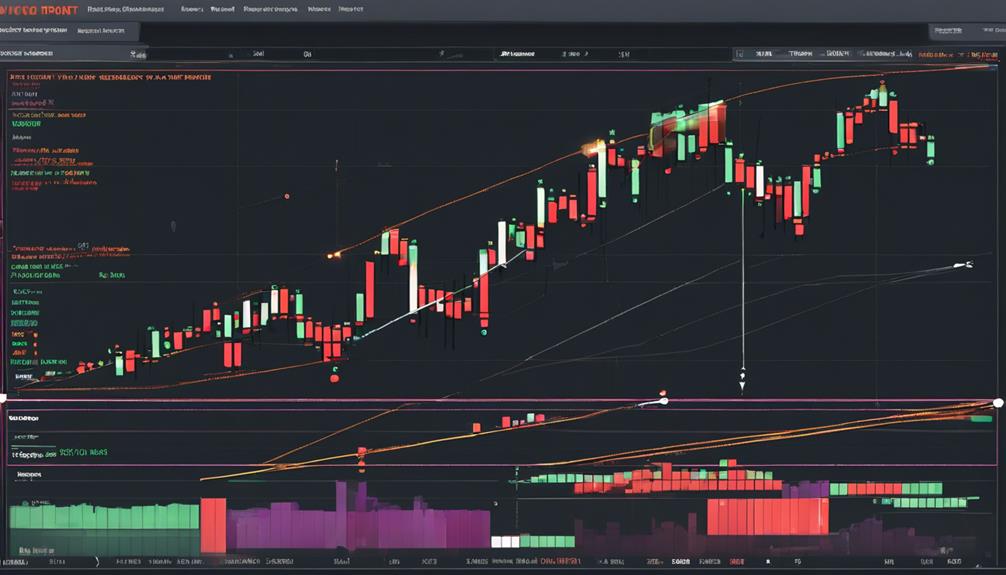
Effective risk management strategies in trading are crucial for optimizing profitability and minimizing potential losses. When utilizing pivot points in technical analysis, traders can enhance their risk management techniques in the following ways:
- Set Stop-Loss Orders: Pivot points help determine support and resistance levels, enabling traders to place effective stop-loss orders.
- Calculate Optimal Position Sizes: By considering the distance to the nearest support or resistance level, traders can determine optimal position sizes.
- Identify Price Targets: Pivot points assist in identifying potential price targets for profit-taking, aiding in risk management.
- Adjust Risk-Reward Ratios: Aligning entry and exit points with pivot levels allows traders to adjust their risk-reward ratios effectively.
Integrating pivot points with other risk management tools enhances overall trade planning and execution. By incorporating these elements into their strategies, traders can make informed decisions that balance risk and reward effectively.
Scalping Opportunities With Pivot Points
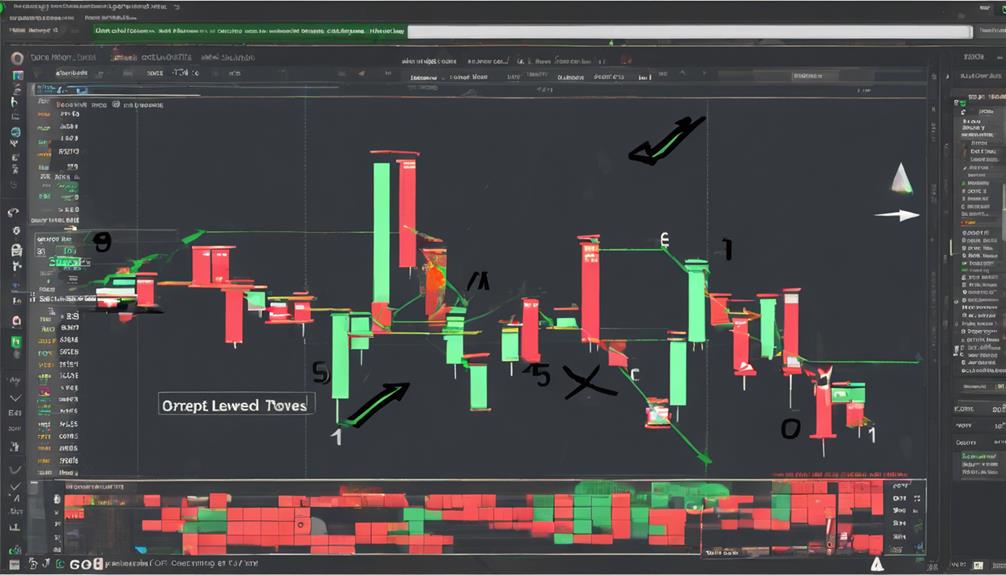
Scalping opportunities with pivot points offer traders a method to capitalize on short-term price fluctuations. By utilizing pivot point levels, traders can swiftly enter and exit positions to seek quick profits.
Setting precise entry points and stop-loss orders based on pivot point calculations is crucial for effective scalping strategies.
Scalping Strategy Basics
Utilizing pivot points in scalping enhances precision in identifying optimal entry and exit points for capitalizing on short-term price fluctuations efficiently.
- Scalping strategy involves quick decision-making based on key support and resistance levels.
- Scalpers aim to profit from small price changes by exploiting pivot points.
- Efficient entry and exit points are crucial for scalping with pivot points.
- Disciplined risk management is essential to navigate the fast-paced nature of scalping.
Identifying Entry Points
In the context of trading strategies, pivot points serve as valuable tools for identifying precise entry points in scalping opportunities. Scalping strategies focus on short-term price movements, aiming to capitalize on small price fluctuations through quick trades.
Traders can leverage pivot points to pinpoint optimal entry and exit points for their scalping trades, providing clear levels for making decisions. Effective use of pivot points in scalping requires swift decision-making and robust risk management to ensure success in these fast-paced trading scenarios.
Setting Stop-Loss Orders
Effective risk management in scalping strategies utilizing pivot points involves setting precise stop-loss orders based on key support and resistance levels identified by these technical tools. Traders can optimize their stop-loss placement by considering the following:
- Using pivot points to determine support and resistance levels for stop-loss orders.
- Scalping opportunities with pivot points enable capturing small price movements efficiently.
- Setting stop-loss orders at pivot point levels aids in managing risk during quick trades.
- Identifying key levels through pivot points helps in determining the optimal placement for stop-loss orders, minimizing potential losses.
Incorporating Pivot Points in Day Trading
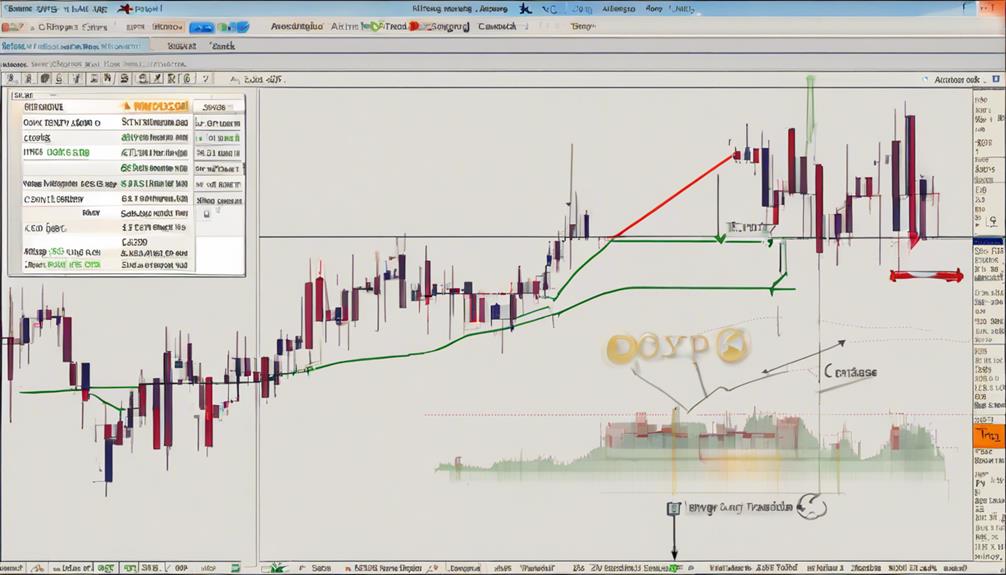
How can day traders effectively integrate pivot points into their intraday trading strategies to enhance decision-making and risk management?
Pivot points play a crucial role in day trading by identifying key levels of support and resistance, which are essential for making informed trading decisions throughout the day.
Day traders often use pivot points to determine entry and exit points, set stop-loss orders, and establish profit targets based on the price action around these levels.
By trading above the pivot point, traders may adopt a bullish bias, while trading below it suggests a bearish bias in intraday trading.
Additionally, combining pivot points with other technical indicators can help confirm trading signals and optimize trading strategies.
Day traders rely on pivot points not only to gauge market sentiment but also to plan trades in advance and manage risk effectively during the trading session.
This integration of pivot points into day trading strategies enhances overall decision-making processes and risk management practices.
Using Pivot Points in Swing Trading
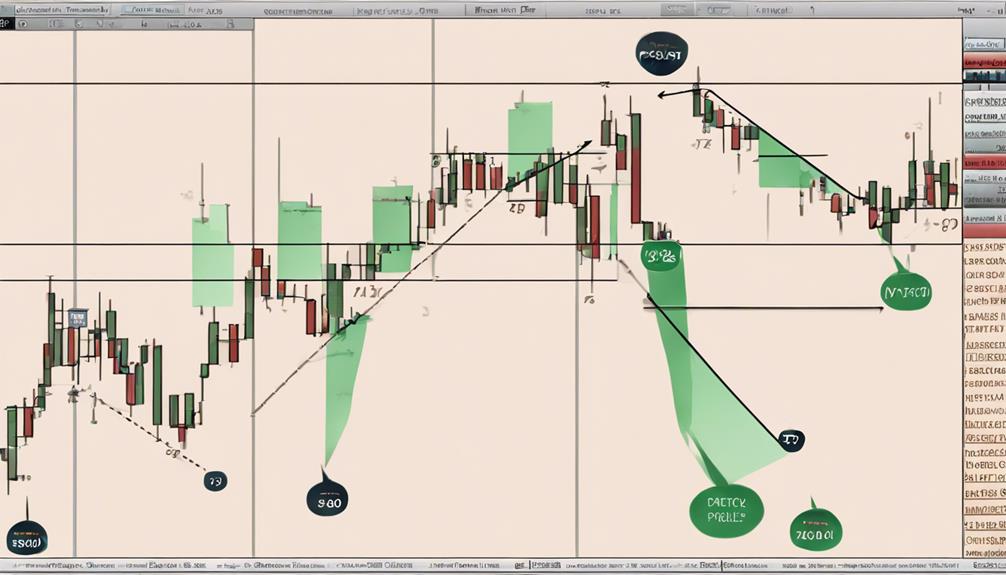
Utilizing pivot points in swing trading aids traders in pinpointing crucial support and resistance levels for strategic entry and exit decisions based on price reversals and short to medium-term trends.
When incorporating pivot points into swing trading strategies, traders benefit from:
- Identifying key support and resistance levels for potential entry and exit points.
- Determining price reversals and trends in the short to medium term.
- Setting stop-loss orders and profit targets to enhance risk management.
- Making informed decisions based on price action analysis.
Combining Pivot Points With Other Indicators
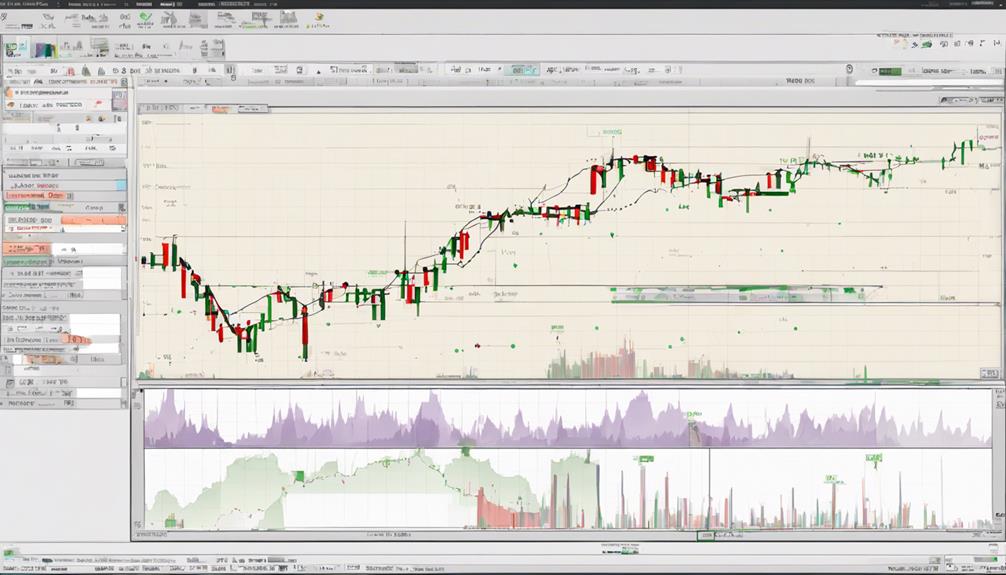
When combining pivot points with other indicators in technical analysis, traders can enhance the accuracy of identifying crucial support and resistance levels. By integrating pivot points with moving averages, traders can gain a better understanding of the overall trend and potential reversal points.
Pairing pivot points with oscillators like RSI or MACD can provide confirmation of entry or exit signals based on overbought or oversold conditions. Additionally, combining pivot points with volume analysis can help validate price movements at key levels by confirming the strength of a breakout or breakdown.
Overlaying Fibonacci retracement levels with pivot points can further strengthen the identification of significant price zones where price may react. Moreover, integrating pivot points with trend lines allows for a comprehensive approach to analyzing price action and market trends, providing a more holistic view of potential price movements.
Backtesting Pivot Point Strategies
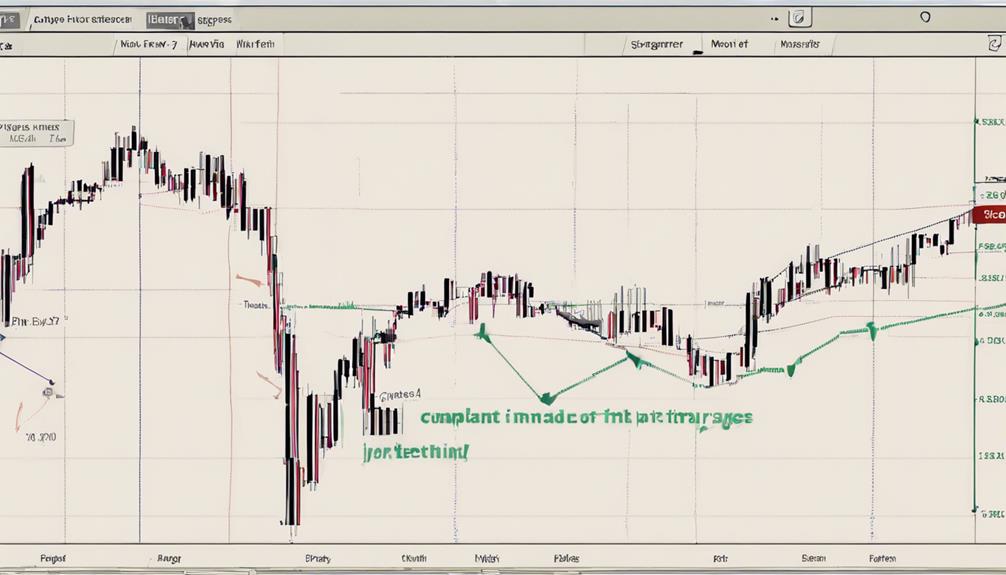
Analyzing the effectiveness of pivot point strategies through historical data, known as backtesting, provides valuable insights for traders seeking to optimize their trading decisions. Backtesting pivot point strategies involves applying historical data to assess how pivot points could have influenced entry and exit points based on past price action.
Traders use this analysis to understand the reliability and performance of pivot points in various market conditions. Furthermore, backtesting allows traders to refine their trading strategies by incorporating pivot points and observing the outcomes of historical testing. This process provides insights into the potential profitability and risk management implications of using pivot points in trading.
How Can I Use Pivot Points in Technical Analysis for Different Trading Strategies?
Pivot points in technical analysis are crucial for developing trading strategies. Traders can utilize pivot points to identify potential support and resistance levels, as well as determine entry and exit points. By incorporating pivot points into their analysis, traders can implement various strategies such as breakout or reversal trading.
Frequently Asked Questions
What Are Pivot Points Best Used For?
Pivot points are primarily utilized for identifying key support and resistance levels, aiding traders in pinpointing potential price reversals and establishing effective entry and exit points. They play a crucial role in enhancing market analysis and facilitating informed trading decisions.
What Is the Best Indicator to Use With Pivot Points?
When utilizing pivot points, the best indicator to pair with them is the Relative Strength Index (RSI). This indicator aids in confirming overbought or oversold conditions, enhancing trading decisions by providing insights into potential price reversals.
Do Professional Traders Use Pivot Points?
Professional traders extensively rely on pivot points to assess market sentiment, identify potential support and resistance levels, and determine optimal entry and exit points. Pivot points serve as a crucial tool in making informed trading decisions across various financial instruments.
What Is the Main Use of a Pivot Point?
A pivot point's primary function lies in guiding traders to discern critical support and resistance levels, aiding in strategic decision-making for potential reversals and trade entries/exits. This pivotal tool enhances trade planning and risk management strategies effectively.
Conclusion
In conclusion, pivot points are a versatile tool in technical analysis that can greatly benefit traders in various ways. They help in identifying key levels and enhancing risk management. By incorporating pivot points into their trading strategies, traders can make more informed decisions and improve their overall performance.
Just as a compass guides a traveler through uncharted territory, pivot points serve as a navigational tool in the volatile markets. They help traders stay on course and reach their desired destination.


